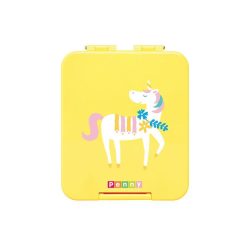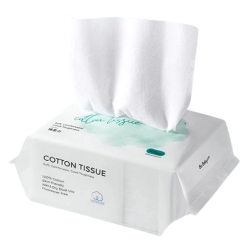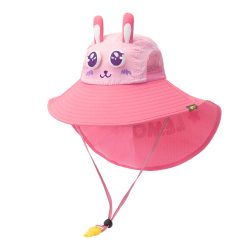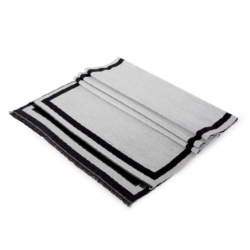16th August 2022
We all have gone through a lot during the days of the pandemic and have clearly understood the importance of masks in our lives. COVID-19 has made us aware of how vital these masks are in our lives. These tiny pieces of cloth or disposable paper have saved many lives and stopped the infection from spreading to a great extent.
Viruses can quickly spread when people cough, talk, sneeze or breathe. A well-fitted clean mask helps us to avoid the spreading of the virus. It also protects the wearer from becoming infected. The hidden fact is that it stops people from touching their face, mouth and nose, as contaminated hands and fingers are another way for viruses to spread (L, 2022). The use of face masks should be strongly encouraged for:
- Vaccinated and unvaccinated people age two years or older.
- Children who are ineligible for covid 19 vaccination.
- Children with weakened immune systems who may not have mounted a complete immune response to the vaccine are at high risk if they get sick.
- Children who have grandparents at home as they regularly visit public places like buses and schools.
- Children and youth with special health care needs who may be vaccinated but are at high risk of falling sick.
Infants and children under two years old are too young for the vaccine and too young to wear face masks. We can protect them by wearing face masks ourselves.
Why wear masks at day-care, preschool or school?
Well-fitting face masks worn by everyone two years old and older and adults, including childcare teachers, regardless of vaccination status, protect them and others—especially if they are not vaccinated.
In K-12 schools, students, teachers, staff and visitors should be supported if they continue wearing masks. The same is true for anyone who continues wearing masks for sports (Face Masks for Children During COVID-19, 2022).
What kind of face mask is good?
Look for a well-fitting, comfortable mask that fits your child’s face. The show should fit securely under the chin but not impair vision and cover the mouth and nose. It should fit snugly along the sides of the face without any gaps. Remember to wash your hands before and after wearing it and avoid touching it once it’s on. When back home, avoid touching the front of the face mask by taking it off from behind. Disposable face masks are great as you do not have to clean them every time; also, you are not at risk of wearing a dirty face mask (Face Masks for Children During COVID-19, 2022).
Note: Face masks should not be worn when eating or drinking. Also, ensure the mask has no choking or strangulation hazards for young children.
After considering these facts, we decided to introduce Bc Babycare disposable face masks, especially for kids. This gives them a proper fitting as adult masks often do not cover the face adequately and are loose in fitting. Keep your kids protected with specifically designed kid’s face masks. The masks are designed to fit children’s faces and noses with no gaps, are adjustable and breathable and come in 5 fun colours.

Kids Disposable Mask (10PCS) – 5 Colours/Pack
Bc Babycare Kids Disposable Face Masks are the best way to keep your child safe during the COVID-19 Pandemic. The face masks are designed for kids’ faces and cover the nose without leaving gaps. Each pack comes with five fun colours that your child will love!
Features:
- Scientific Resistance Value
- Breathable
- Triple Guardian
- Bacterial Filtration Efficiency (BFE)>95%
- Ten pcs
- Five colours per pack
- Fits children’s face and nose with no gaps
- Dimensions: 100mm x 125mm
QUICK TIPS ON USING MASKS:
- Advise kids to always wash hands before touching masks.
- Put the masks on by putting loops around your ears.
- Check that mask covers your nose, mouth and chin with no gaps on the side.
- Do not share masks with friends.
- Use loops to take off the mask. Do not touch the front.
- Put dirty disposable masks in the bin.
- Encourage your child to practise wearing a face mask for short periods at home first. You can work up to more extended periods.
- Give your child some choice in their face masks if you can. For example, let your child choose colours, patterns or materials.
- Let your child decorate their masks. They could put stickers on them or draw their favourite character.
- If your child is younger, make a game out of it. For example, put your mask on at the same time as your child and make up silly songs or rhymes about wearing them, or pretend you’re masked superheroes (Wearing face masks: tips to help children and teenagers, 2021).
We hope you like this article. Please stay connected with us to get more information and tips for effective parenting.
References
L, J., 2022. Coronavirus (COVID-19): Kids and Masks. [online] Kids Health. Available at: <https://kidshealth.org/en/parents/coronavirus-masks.html> [Accessed 17 August 2022].
HealthyChildren.org. 2022. Face Masks for Children During COVID-19. [online] Available at: <https://www.healthychildren.org/English/health-issues/conditions/COVID-19/Pages/Cloth-Face-Coverings-for-Children-During-COVID-19.aspx> [Accessed 17 August 2022].
Raising Children Network. 2021. Wearing face masks: tips to help children and teenagers. [online] Available at: <https://raisingchildren.net.au/guides/coronavirus-covid-19-guide/wearing-face-masks-tips-to-help-children-teenagers#:~:text=Putting%20on%20a%20face%20mask,mask%20has%20a%20nose%20piece).> [Accessed 17 August 2022].



playmat-Green-250x250.jpg)


